 In my first post I mentioned how "butchery" (or basically working with anything that resembles a live creature) doesn't appeal to me. Saturday's seafood class reconfirmed that when we had to learn how to fillet a whole fish. Lets just say I will not be eating fish for a while... and it's not the first time.
In my first post I mentioned how "butchery" (or basically working with anything that resembles a live creature) doesn't appeal to me. Saturday's seafood class reconfirmed that when we had to learn how to fillet a whole fish. Lets just say I will not be eating fish for a while... and it's not the first time.Years ago, under the delusion that I'd like to see my next meal from it's living breathing days through to my plate, I went to a live seafood market. After I chose a fish, they hacked its head off (I probably should have done that myself, but I at least watched) and handed it to me in a bag (the fish, not its head). I got my fish in a bag home. Its nerve endings were still so fresh that, as I rinsed it under cold water, it "flinched" and jumped onto the kitchen floor. Though I forced myself to eat that fish (it'd already given up its life), I couldn't eat fish after for months. The market also had poultry so I didn't have an appetite for chicken either. I was a vegetarian, except I'd eat beef. Makes complete sense, right? ;-)
Eventually I went back to eating seafood. A good thing, because when you eat the right seafood (more on this later), it's very healthy. According to my Bauman class materials, seafood's high-quality protein is easily digestible. Cold water fish are composed primarily of omega-3 fatty acids, which have anti-inflammatory effects and are important to heart health. Seafood can also be a good source of calcium (in fish with bones like canned salmon or sardines), zinc, iron, copper, potassium, iodine, phosphorus and selenium. Plus, most fish is naturally low in cholesterol.
Unfortunately, there are also negatives to seafood consumption today, due to sustainability concerns (fish farming pollutes coastal waters and harms eco-systems) and contaminants (mmmm, nothing like a good serving of mercury). The larger the fish (for example, shark and tuna), the more likely it contains contaminants. A helpful resource, as we try to muddle through what is best to consume, is this pocket guide from the Environmental Defense Fund. They even have a mobile app you can check while you're in front of the seafood counter.
My favorite part of seafood class was cooking "en papillote," which means "in paper." It's easy but looks impressive -- the best type of recipe! We placed individual servings of fish in the center of parchment paper (cut into a large circle or heart shape), seasoned them (salt, pepper, a bit of liquid or oil and whatever else you like), tightly crimped the packets shut and baked for about 12 minutes at 400 degrees. The parchment seals in steam so everything is nice and moist. I found this recipe using the en papillote method for dilled salmon. It calls for higher heat but a shorter cooking time than we used. I'm also going to use the method when I test a chicken and lentil stew recipe this week from the cookbook "Artichoke to Za'atar" (Modern Middle Eastern cooking). If it's any good I'll share!





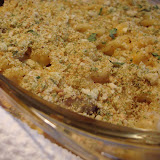

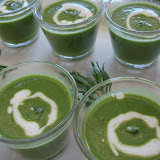







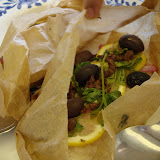





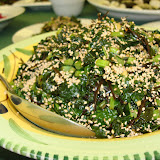
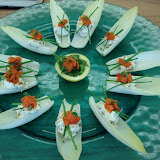
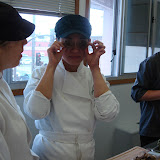


No comments:
Post a Comment